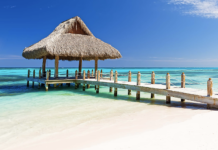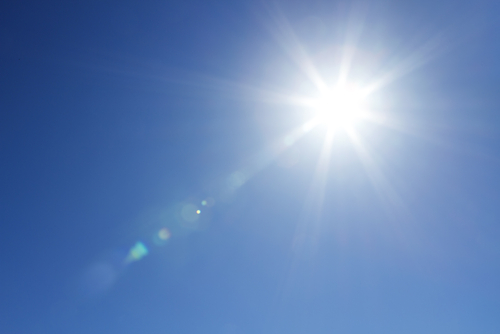Australia Day marks the anniversary of the day Captain Arthur Phillip first raised the British flag at Sydney Cove. It commemorates the arrival of Europeans to Australia on 26 January 1788.
Uluru © Nathan Siemers
Australia Day is a designated public holiday and is a time for Australians of all backgrounds to celebrate national unity. It is also a time to appreciate heritage and history; to take an active part in the community and to remember colonial pioneers.
Australia Day usually begins with morning formalities; flags are hoisted, the national anthem is sung, cannons are fired, special community projects and individuals are recognised, ceremonies are held to welcome the country’s new citizens. Many formal occasions are co-ordinated by the national Australia Day Council network.
Over the years many informal events have become so popular they are now considered an Australia Day tradition. There are free barbeque breakfasts and fun beach parties, corroborees and concerts, parades and pageants, sports, festivals and fireworks.
History of Australia Day
Britain’s gaols (jails) were crowded and the crime rate was soaring in 1787 when King George III sealed Australia’s fate by declaring it Britain’s new penal colony. Being sent to Botany Bay was a severe punishment. Sentences ranged from a minimum exile of seven years to life, with varying degrees of hard labour.
Under the command of Arthur Phillip, 11 ships of the First Fleet left Plymouth on 13 May 1787. It was an arduous journey with more than 1,400 people living in cramped conditions for 251 days. Captain Phillip arrived at Botany Bay on board The Supply on 18 January 1788, two days ahead of the rest of the fleet. He thought the unprotected bay with its poor soil was unsuitable for permanent settlement.
The fleet then sailed north into Port Jackson and landed at Sydney Cove on 26 January 1788 after eight months at sea. The new site had everything the first settlers needed; deep water close to the shore, shelter and fresh water. Phillip named it Sydney Cove, after Lord Sydney the British Home Secretary.
More than 700 convicts (188 female), 700 merchant seamen, Royal Navy and Marine personnel and families, 209 fowls, 74 pigs, 35 ducks, 29 sheep, 29 geese, 19 goats, 18 turkeys, five cows, four stallions, three mares and two bulls disembarked from the First Fleet.
Australia Day for indigenous Australians
Australia Day means different things to different people and evokes mixed emotions, particularly for Indigenous Australians who face past and continuing inequities as a result of European settlement.
For many Indigenous Australians, 26 January is an occasion to reflect on past loss and suffering. There are also people in the wider community who have mixed feelings about Australia Day and who acknowledge that Australia Day is a day that triggers an ambiguous response for many.
Today, organisers of Australia Day events are sensitive to Indigenous heritage and culture, and of the continuing problems confronting Indigenous communities. Australia’s national day is an important annual opportunity to recognise the place of Indigenous Australians in our nation’s history, and to promote understanding, respect and reconciliation.
It is also a time for each Australian to think about our identity, the many aspects of Australian life that give us pride and areas where we have the opportunity to make the nation stronger for the future. These reflections are individual and special to each Australian.
The National Australia Day Council
It was not until 1946 that the name ‘Australia Day’ was adopted and proclaimed a public holiday throughout the country. A decision was made in Melbourne that year to establish an Australia Day Council (ADC), which would encourage an appreciation of the day’s significance.
The ADC played a major role in cultivating the goodwill, which is now so prevalent in Australian society. The ADC network aims to foster national pride and to instil in Australians from all backgrounds a desire to contribute to the country’s future. The ADC fosters community spirit and promotes an appreciation of Australia’s heritage.
Sydney harbour © Jason James
Australia Day Events
Hundreds of events take place across the nation as Australians head to beaches, backyards and barbecues to celebrate Australia Day.
In Sydney, thousands of people gather along Sydney Harbour foreshore to watch the Australia Day parade on the water. In towns across the nation, people gather to raise the flag. Other activities include citizenship ceremonies, community breakfasts and the presentation of Australia Day awards.
Also on the agenda across the country are music concerts, sporting events, cultural and historic exhibitions and fireworks displays.
Australian of the Year Awards
Each year the Australian of the Year Awards celebrates the achievements and contributions of eminent Australians. These people inspire the community through their achievements and they challenge us to make our own contribution to creating a better Australia. There are four award categories:
- Australian of the Year
- Senior Australian of the Year (60 years and over)
- Young Australian of the Year (16 to 25 years)
- Australia’s Local Hero
The Australian of the Year Awards were founded in 1960, when Sir MacFarlane Burnet OM AK KBE received the inaugural award. The awards acknowledge the contributions of many outstanding Australians. The awards are announced in Canberra on Australia Day eve.
Click here for events taking place in Melbourne and Sydney today, and to download a full Australia Day 2015 program, click here.
And check out current weather forecasts in various parts of Australia – it’s definitely warmer down under right now…
Happy Australia day Australia!








